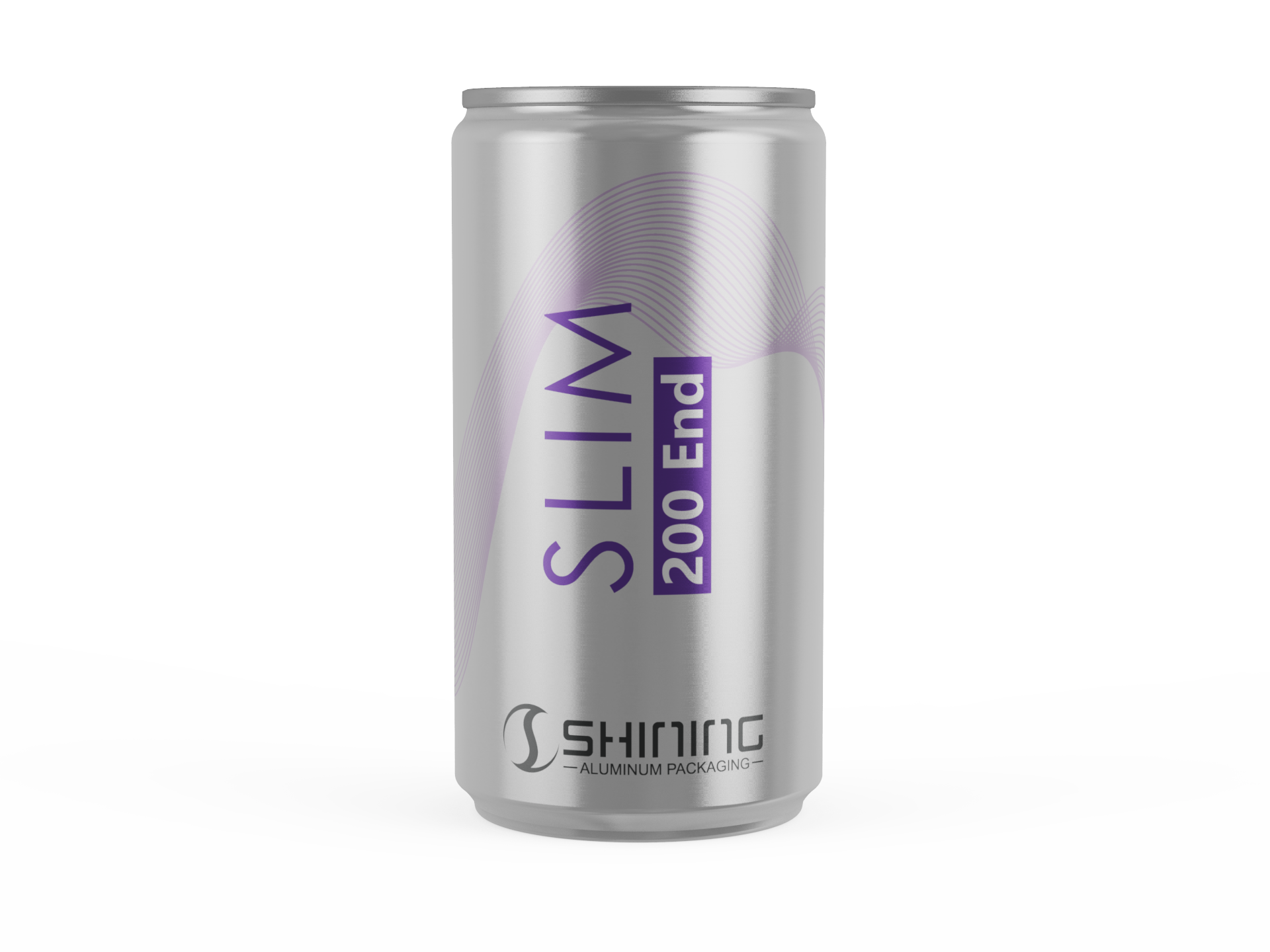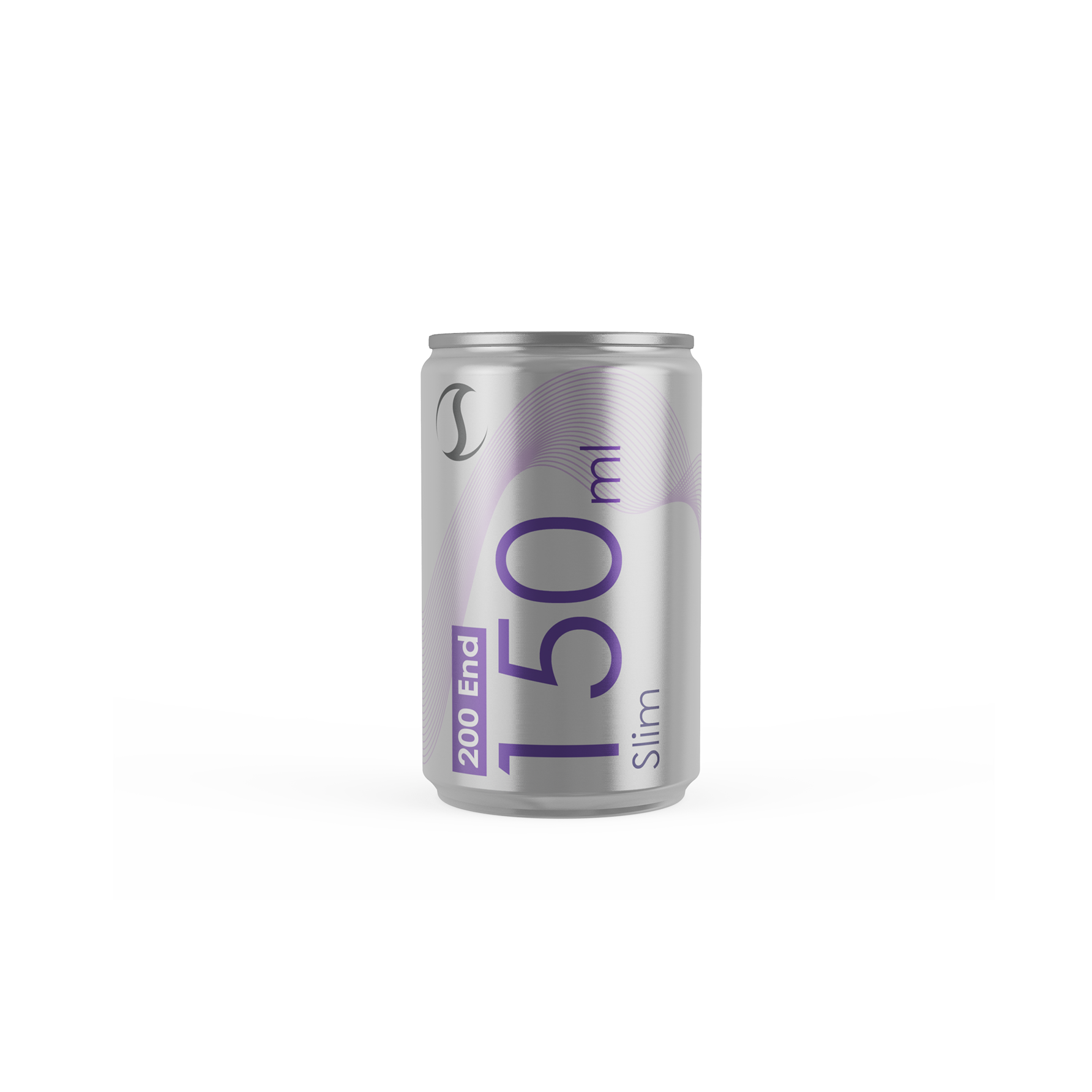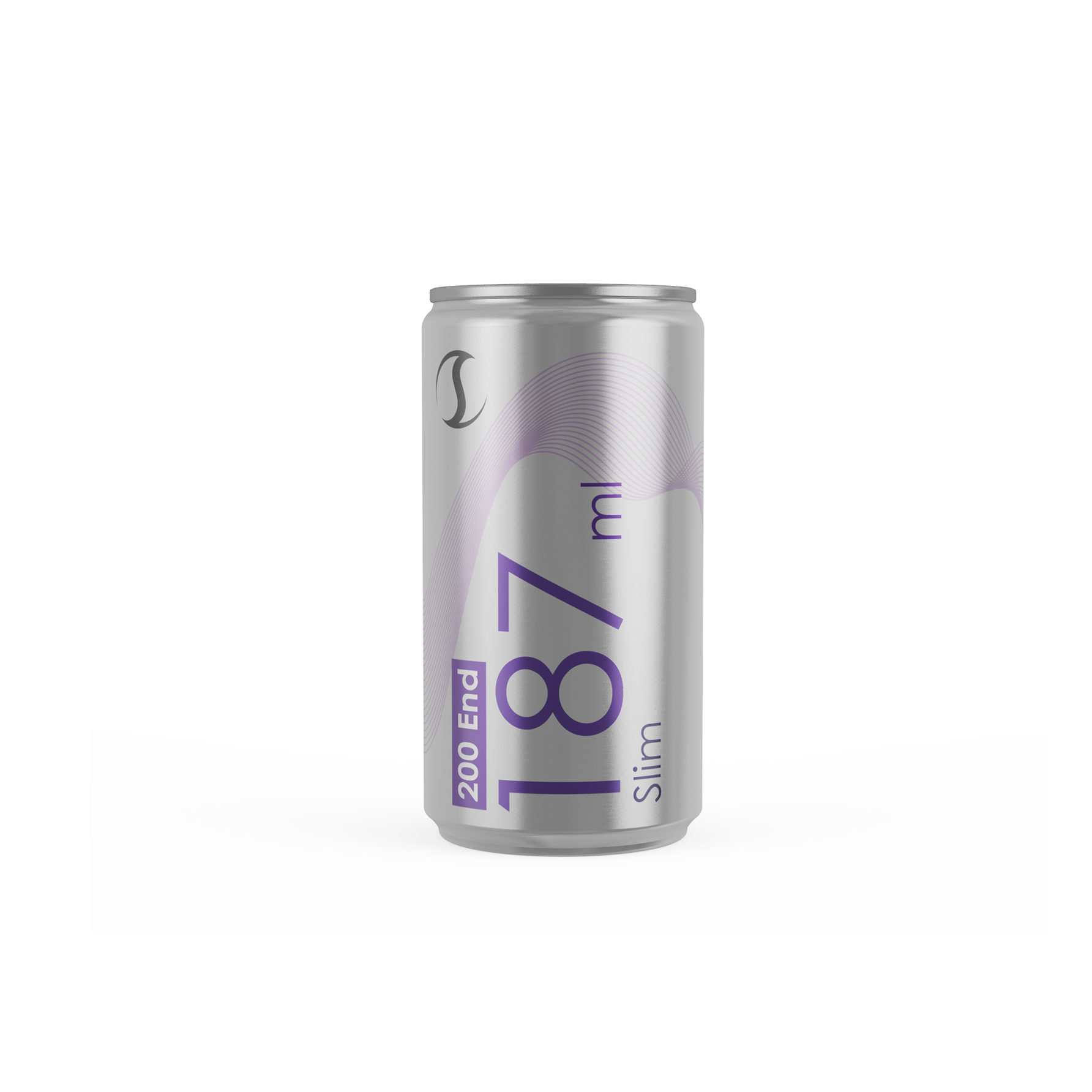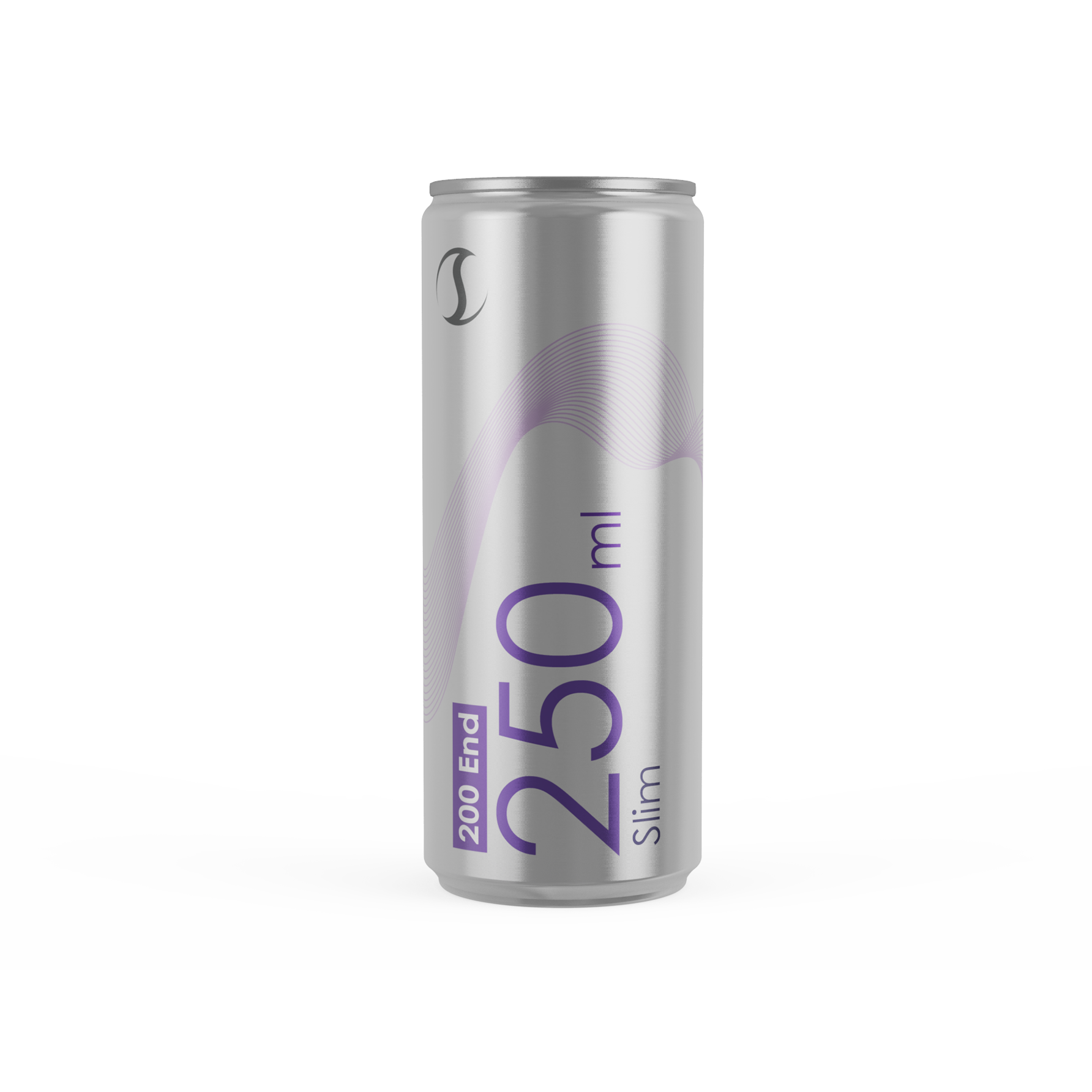As premier aluminum slim can manufacturers, we produce slender 53 mm Ø, 200-end cans in 190 mL and 250 mL formats. Designed for on-trend energy drinks, coffee, or wine, they carry epoxy or BPANI internal coatings and support high-definition printing up to seven colors. Their refined silhouette evokes premium positioning—while our team helps manage higher MOQs and packaging logistics.
Inside Neck Diameter
50.00±0.25mm
Outside Can Diameter
53.4mm
Stand Diameter
47.24mm
Neck Length
7.1±0.50mm
Minimum Dome Reversal Pressure
6.2bar
Minimum Column Strength
1000N
Easy Open End
200(50.00±0.25mm)

| Can Type | Capacity | Can End Diameter | Can Body Diameter | Can Height |
|---|---|---|---|---|
| Slim Can | 150 ml / 5.3 oz | 50.0 mm / 1.97 inch / 200 End | 202 / 53.4 mm / 2.10 inch | 88.4 mm / 3.48 inch |
| Slim Can | 187 ml / 6.3 oz | 50.0 mm / 1.97 inch / 200 End | 202 / 53.4 mm / 2.10 inch | 104 mm / 4.09 inch |
| Slim Can | 250 ml / 8.4 oz | 50.0 mm / 1.97 inch / 200 End | 202 / 53.4 mm / 2.10 inch | 133.9 mm / 5.27 inch |



Shining Packaging’s Slim Cans feature an ultra-slim 53mm diameter, delivering a sleek, high-end aesthetic perfect for premium beverages like energy drinks, wines, cold brew, and craft seltzers. With a capacity range of 150ml to 250ml, these cans are ideal for sampling or single-serve portions, offering size flexibility to meet diverse market needs. Designed with industry-standard 200 can ends, they require specialized trays, cartons, and tooling for seamless integration into production lines. Crafted from recyclable aluminum using a drawn-and-ironed process, Slim Cans combine durability, lightweight design, and eco-friendly appeal, aligning with sustainable packaging trends.
Stand out on shelves with Shining Packaging’s Slim Cans, featuring advanced full-can printing with up to 7-color solvent or UV-curing inks. This technology delivers eye-catching, high-definition graphics that enhance brand differentiation and create a premium unboxing experience. UV printing provides an eco-conscious, recyclable finish, showcasing vibrant colors and intricate designs. Transform your Slim Cans into a powerful branding tool, capturing consumer attention and reinforcing exclusivity in competitive markets.
Ensure your beverage’s integrity with Shining Packaging’s cutting-edge internal coatings for Slim Cans, available in epoxy or BPA NI (non-intent) options. These coatings protect against corrosion and chemical interactions, preserving pristine flavor and quality. The BPA NI formulation caters to health-conscious consumers, meeting stringent industry standards. Rigorously tested for safety and freshness, our coatings are ideal for premium beverages, offering peace of mind and a superior drinking experience that elevates your brand’s reputation.
Shining Packaging is a leading aluminum can manufacturer, producing high-quality beverage cans through precision engineering. Our automated process transforms aluminum coils into lightweight, durable cans via deep drawing, ironing, trimming, and cleaning. Each can features vibrant 360° printing, protective varnishing, and food-grade interior coatings to ensure product integrity. With rigorous leak testing and recycled content, our aluminum can production meets global sustainability standards while delivering performance for carbonated drinks, beers, and more.
Aluminum cans are widely used for beverage packaging due to their lightweight, durable design and excellent preservation properties, effectively blocking air, light, and moisture to maintain the original flavor and quality of beverages while ensuring efficient and reliable transportation and storage. Additionally, their surface supports high-quality printing for attractive packaging, and aluminum’s superior thermal conductivity allows rapid cooling, enhancing the drinking experience. Notably, aluminum cans are 100% recyclable, boasting the highest consumer recycling rate among all beverage packaging.
Introducing our AI academy trainers, dedicated to equipping learners with the skills and knowledge needed to thrive in the field of artificial intelligence.

Machine Learning Specialist

Natural Language Specialist

Computer Vision Specialist

Computer Vision Scientist

AI Ethics & Policy Specialist

Robotics & AI Expert

AI Research Scientist
As a trusted aluminum can manufacturer, we deliver precision-engineered packaging solutions that meet the quality industry standards, including ISO 9001, Sedex, and ISO 14001 certifications. Our FDA and LFGB-compliant food-grade aluminum cans ensure product safety while enhancing shelf appeal. Partner with us for sustainable, innovative, and high-performance packaging—backed by end-to-end expertise for brands that demand quality and reliability.
0086-574-87811501
sales@shiningenvase.com
The easy open end (EOE) has specific dimensions based on the can series:
200 Series: Outer diameter of 57.40 mm, curl height of 2.05 mm, and countersink depth of 6.60 mm.
202 Series: Outer diameter of 59.44 mm, curl height of 2.03 mm, and countersink depth of 6.86 mm.
206 Series: Outer diameter of 64.82 mm, curl height of 2.01 mm, and countersink depth of 6.35 mm. Tolerances are ±0.25 mm for outer diameter, ±0.20 mm for curl height, and ±0.15 mm for countersink depth. The opening force is approximately 26 N ± 2 N, ensuring ease of use.
The internal and external coatings of aluminum two-piece cans are tested for quality:
Curing Test: Coatings must be fully cured, showing no discoloration, bubbling, or peeling after exposure to sterilization processes.
Adhesion Test: Coatings must adhere strongly, with no peeling when subjected to adhesion tests (e.g., using adhesive tape after scoring).
Sterilization Resistance: Coatings must remain intact and functional after sterilization processes, ensuring compatibility with food or beverage contents. These tests ensure the coatings protect the can and its contents effectively.
Aluminum two-piece cans undergo rigorous quality inspections:
Dimensional Inspection: Specialized gauges measure can height, diameter, and EOE dimensions to ensure compliance with specifications.
Visual Inspection: Conducted under natural light at a 60 cm distance to check for surface defects, printing quality, and coating integrity.
Physical Tests: Include axial load and internal pressure tests to verify structural integrity.
Coating Tests: Assess curing, adhesion, and sterilization resistance to ensure coating performance. These inspections ensure consistent quality and reliability.
201, 204, and 211 are series numbers for beverage can diameters, based on inches (whole inches + sixteenths).
Calculation: Inches = X + Y/16, then millimeters = inches × 25.4. Exact values may vary slightly per standards
Packaging can be simpler. Let’s explore our metal packaging solutions to meet your business and consumer needs.